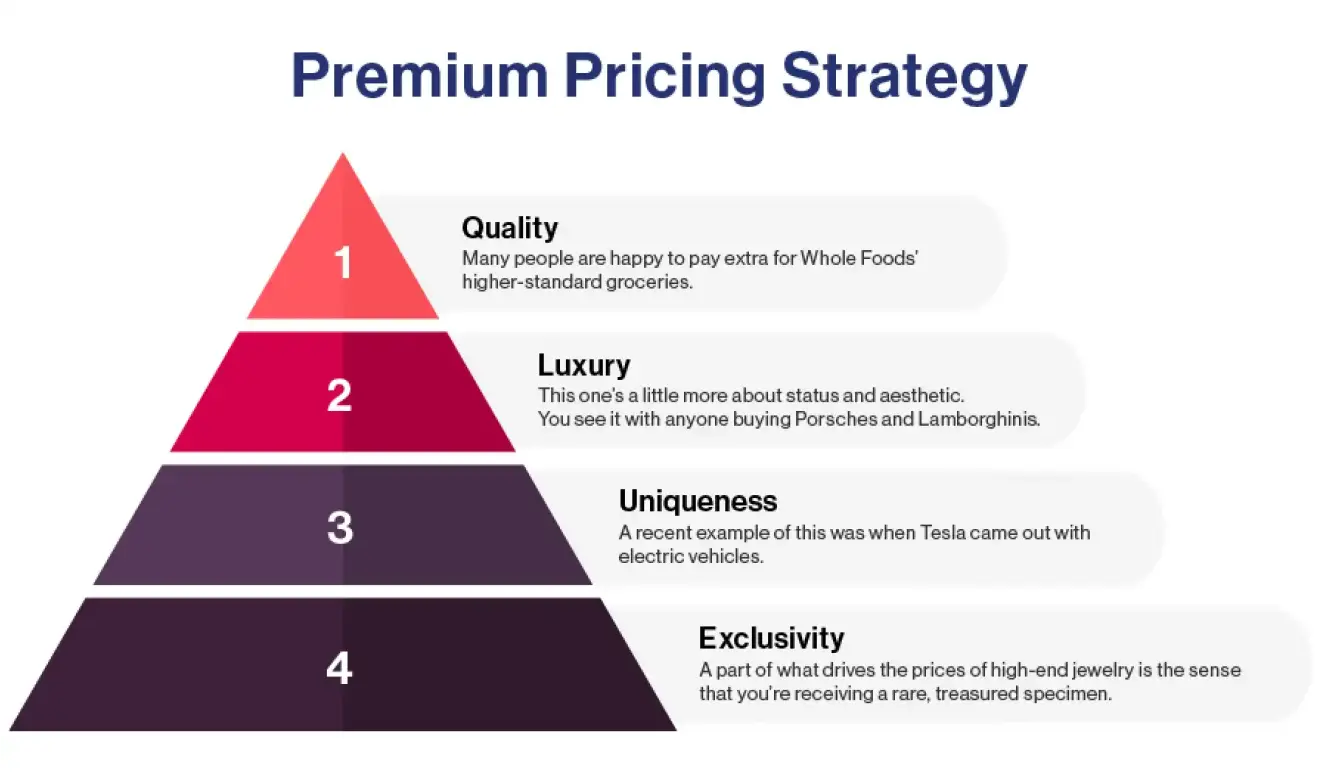The Duty of Competitive Analysis fit Your Pricing Strategy
Wiki Article

Master Effective Rates Techniques to Make The Most Of Profit
In the ever-evolving landscape of commerce, mastering efficient pricing techniques is crucial for businesses aiming to take full advantage of earnings. A nuanced understanding of prices psychology can significantly influence consumer behavior and investing in choices.Recognizing Rates Psychology
Recognizing rates psychology is crucial for companies aiming to optimize their rates strategies. This area checks out exactly how customers view rates and exactly how these perceptions affect their getting decisions. Secret ideas in rates psychology consist of the anchoring effect, where the initial rate provided acts as a reference factor for consumers, and the principle of cost sensitivity, which differs among various customer sectors.Furthermore, services can leverage the concept of viewed value, where the viewed benefits of a service or product can justify a greater rate point. For instance, costs prices can create an aura of exclusivity, bring in customers that connect greater rates with premium quality. On the various other hand, psychological prices, such as setting a cost at $9.99 as opposed to $10, can considerably influence consumer habits by making rates show up a lot more eye-catching.
In addition, scarcity and seriousness can improve the viewed worth of items, triggering quicker buying decisions. Comprehending these mental triggers allows services to formulate pricing strategies that not only drive sales but additionally foster consumer loyalty. Therefore, mastering pricing psychology is vital for efficient rates method formulation, resulting in improved earnings and market positioning.
Implementing Value-Based Prices

First, conduct complete market research to determine the value drivers for your target audience. This can consist of attributes, top quality, brand online reputation, and customer care. Next, section your clients based on their determination to pay and the value they view. By doing so, you can tailor offerings and rates strategies to straighten with various segments.
After collecting insights, collection rates that reflect the optimum amount a client agrees to pay, guaranteeing that they regard a reasonable exchange for the value received. Communicate the worth suggestion properly, highlighting the benefits and differentiators of your offering. Continuously check market conditions and customer responses to fine-tune your rates method over time. By executing value-based rates, businesses can boost success while fostering lasting client loyalty.
Discovering Dynamic Pricing Designs
In today's quickly changing market landscape, vibrant pricing models have become a powerful method for businesses seeking to maximize revenue and reply to changes in demand. These designs allow business to change their costs in real-time based on different variables such as consumer actions, market fads, and check that supply degrees. By leveraging data analytics and algorithms, companies can determine optimal pricing points that make the most of sales while remaining affordable.Dynamic rates can take various kinds, consisting of time-based rates, where costs fluctuate based on time of day or season, and demand-based pricing, which changes costs according to present consumer demand. This adaptability not just improves success however likewise enhances client fulfillment by using costs that mirror real-time market problems.
Applying dynamic pricing needs a durable technological facilities and a deep understanding of customer segments. Clear interaction regarding rates changes can help reduce client discontentment and foster trust fund, eventually leading to continual success in an affordable marketplace.
Analyzing Rival Pricing
Keeping track of competitor rates is necessary for organizations intending to maintain an one-upmanship in their particular markets. By evaluating rivals' prices strategies, companies can identify market patterns, understand consumer preferences, and readjust their pricing accordingly. This evaluation involves celebration data on competitors' prices, advertising strategies, and item offerings find out here to notify prices choices.To effectively assess rival rates, companies must use numerous tools and methods, such as cost monitoring software program, marketing research records, and client feedback. This information can expose how rivals place their solutions and items, permitting organizations to separate their offerings or take on comparable techniques to stay relevant.
Additionally, it is critical to classify rivals right into straight and indirect rivals. Direct competitors provide similar items or solutions, while indirect competitors might meet the same consumer need with various services. Recognizing the nuances in between these teams will make it possible for organizations to customize their rates approaches better.
Inevitably, recurring competitor pricing analysis is essential for making informed prices decisions. It enables organizations to remain dexterous in reaction to market shifts, guaranteeing they can confiscate possibilities and minimize risks related to prices approaches.
Reviewing Pricing Efficiency
Recognizing just how competitor pricing affects market dynamics results in a natural concentrate on examining prices efficiency within one's very own business. This examination is essential for determining locations of strength and possibilities for renovation, ultimately boosting profitability.
Furthermore, conducting regular rates audits can expose disparities between anticipated and real efficiency. This includes contrasting prices information throughout different sectors and networks to recognize variances and identify patterns. Moreover, integrating client responses can provide understandings right into regarded value versus actual rates, making certain try this website alignment with market assumptions.
Last but not least, leveraging information analytics tools can promote deeper understandings into pricing performance, allowing organizations to make data-driven modifications (Pricing Strategy). By consistently reviewing rates performance, organizations can adjust to market modifications and optimize their techniques, ensuring sustained profitability in an affordable landscape
Conclusion
By leveraging prices psychology, businesses can enhance viewed worth and tailor pricing to varied customer segments. The adoption of value-based and vibrant rates designs helps with real-time adjustments based on demand and consumer determination to pay.Comprehending rates psychology is essential for services aiming to enhance their pricing methods. Understanding these mental triggers enables companies to create pricing techniques that not only drive sales however additionally foster consumer commitment. Therefore, grasping pricing psychology is vital for reliable rates technique formulation, leading to enhanced profitability and market positioning.
By evaluating rivals' prices methods, business can identify market trends, comprehend consumer choices, and adjust their prices appropriately. By leveraging rates psychology, businesses can improve perceived value and tailor pricing to varied consumer segments.
Report this wiki page